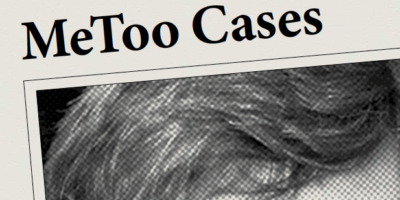
The Right’s Plan to Destroy Legal Abortion
 Forty-six years after the US Supreme Court ruled that state bans on first trimester abortion violated the 14th Amendment’s guarantee of privacy, a well-organized and well-funded anti-choice movement remains hellbent on ending access to both surgical and medical (mifepristone followed by misoprostol) procedures.
Forty-six years after the US Supreme Court ruled that state bans on first trimester abortion violated the 14th Amendment’s guarantee of privacy, a well-organized and well-funded anti-choice movement remains hellbent on ending access to both surgical and medical (mifepristone followed by misoprostol) procedures.
This isn’t new.
Nonetheless, the incremental narrowing of access has put abortion out of reach for many Americans. To wit: 87 percent of counties have no providers and six states are served by just a single clinic, all-too-often forcing patients to travel hundreds of miles to get the healthcare they need. What’s more, according to researchers at the Guttmacher Institute, 27 states require would-be patients to wait between 24 and 72 hours between counseling and the procedure (and often require the counselor to report that abortion has been linked to breast cancer and mental illness, claims refuted by every reputable medical authority) and 37 states require parental involvement in the abortions of pregnant minors. Add in prohibitions on Medicaid funding; regulations demanding that pregnant people listen to the fetal heartbeat or have more than one sonogram before surgery; and mandates that force clinics to become ambulatory surgery centers, and it’s obvious why the number of abortions has fallen. It’s also easy to understand why the number of clinics has plummeted, from more than 2000 in 1991 to 788 in 2017.
These disturbing turns are thoroughly dissected in reporter Robin Marty and Jessica Mason Pieklo’s second co-authored book, The End of Roe v. Wade. The text also chronicles the approximately 400 abortion restrictions that have been legislated by state lawmakers since 2010.
It’s a disturbing, even chilling, read, and while the book might have zeroed in on the organization behind most of the model legislation that has been disseminated to receptive state lawmakers— Americans United for Life—overall, the pair’s analysis provides a grim reminder of what’s at stake should Roe fall.
Trump, of course, is the linchpin of this possibility since one of his campaign promises—fulfilled—was to nominate fervently anti-choice ideologues to the Supreme Court. Indeed, Trump’s fawning over social-issue conservatives has been blatant. As Marty and Pieklo write, “His entire administration has been organized with the specific intention of widening the path for white Catholic and evangelical supporters to have their religious dogma elevated as official federal policy…The Department of Health and Human Services (DHHS) is now dedicated to ensuring that the ‘right to life’ is upheld under all circumstances— from forcing teens to give birth against their will, to funneling money from comprehensive family planning organizations to faith-based, anti-birth control ‘medical clinics.’“ In addition, slack enforcement of FACE, the Freedom of Access to Clinic Entrances Act, enacted in 1994 and enforced by the Department of Justice, has led to increased protests at clinics and an uptick in threats against providers. Predictably, Trump’s DOJ has not brought charges against a single clinic disruptor or trespasser.
The End of Roe v. Wade argues that it is folly to expect them to. Instead, the authors put abortion’s defense squarely in the hands of the reproductive justice movement. While the book posits neither strategies nor tactics, Marty and Pieklo stress that abortion, once deemed a matter of settled law, is perched dangerously close to the edge of a cliff. At this juncture, it’s up to us to summon the chutzpah and rage to keep it from toppling over.
Eleanor J. Bader teaches English at Kingsborough Community College-CUNY, and writes for publications and blogs including Truthout. Kirkus Reviews, The Indypendent, the LA Review of Books, Fiction Writers Review, and The Progressive.





